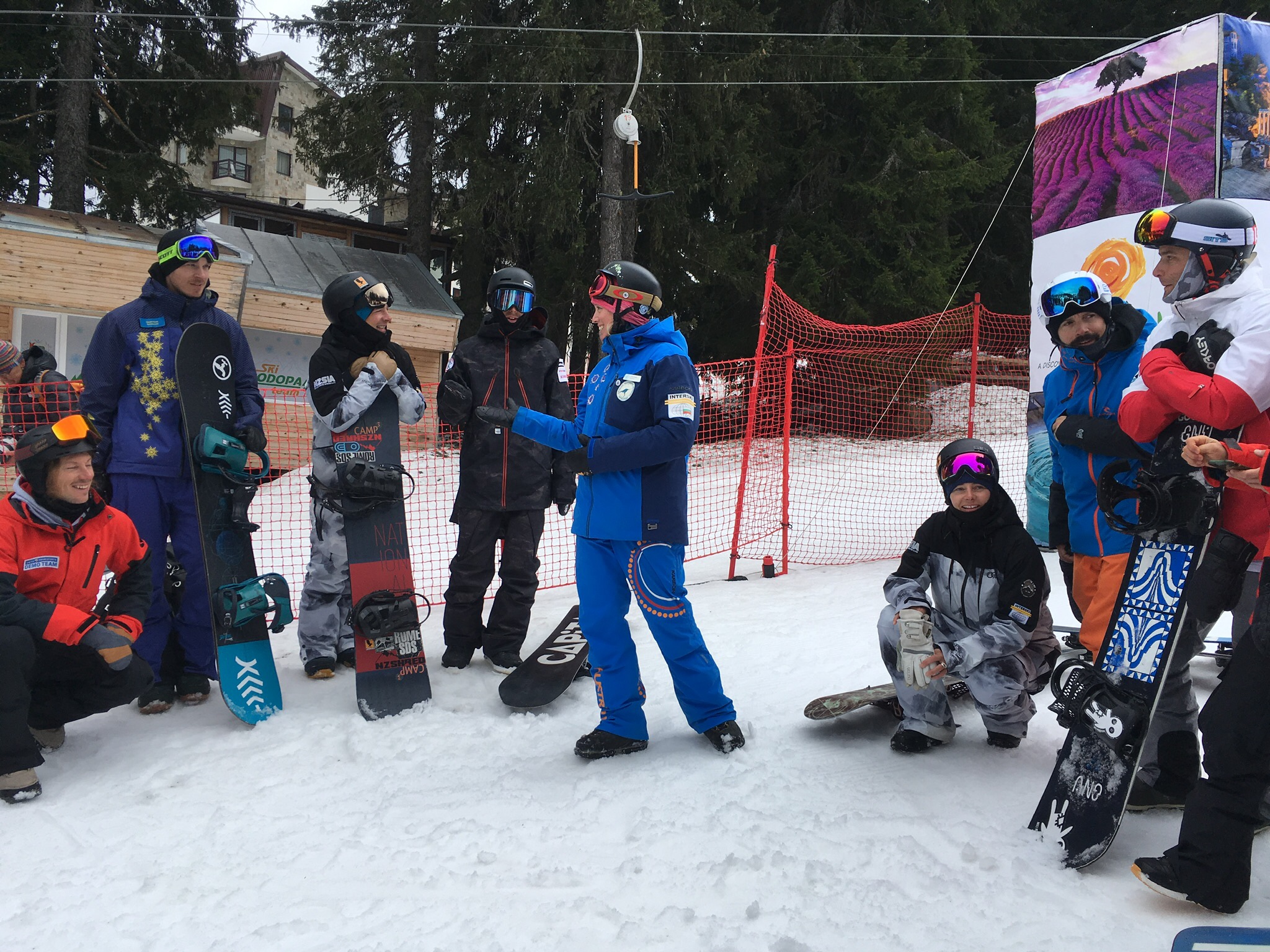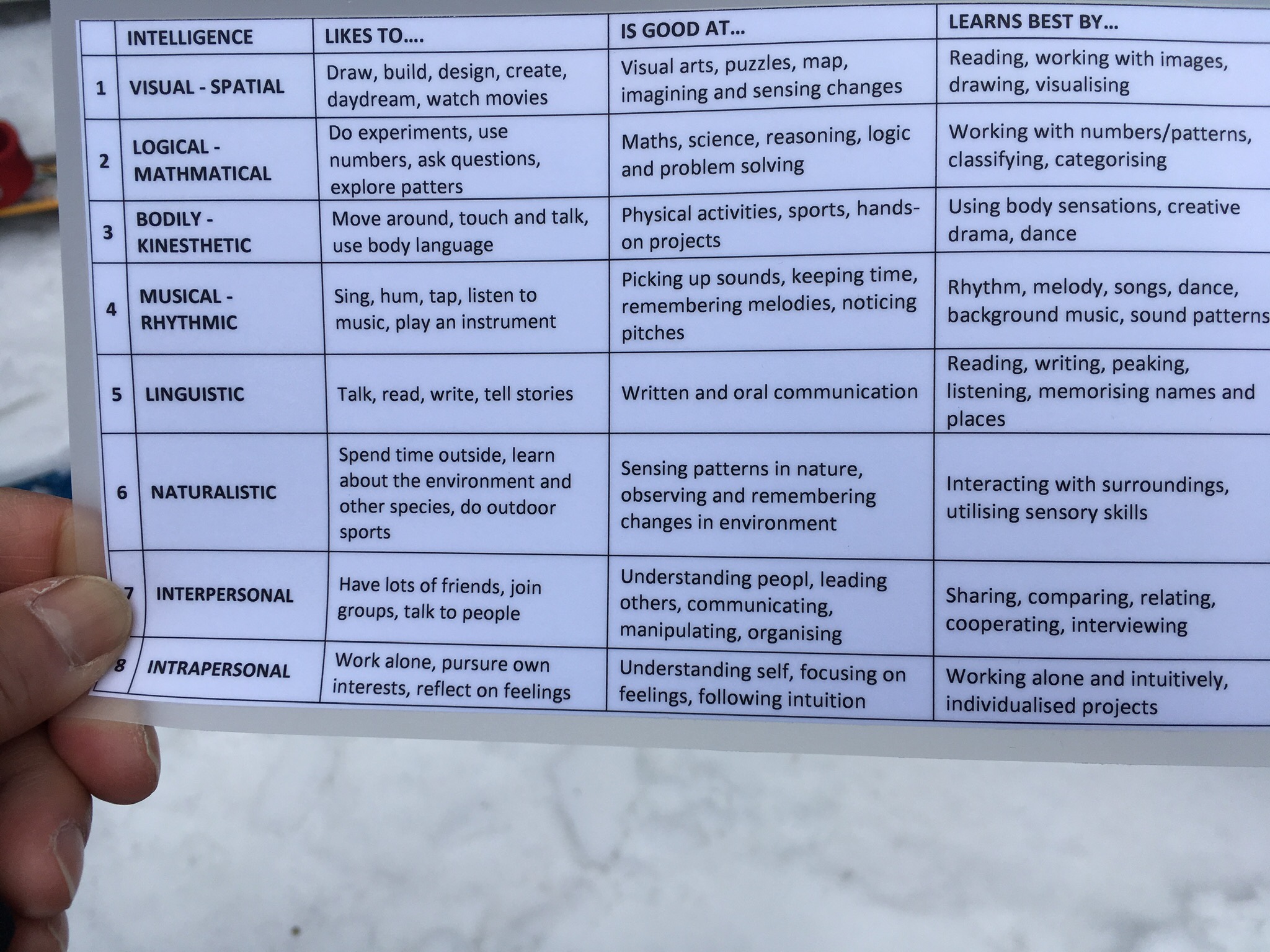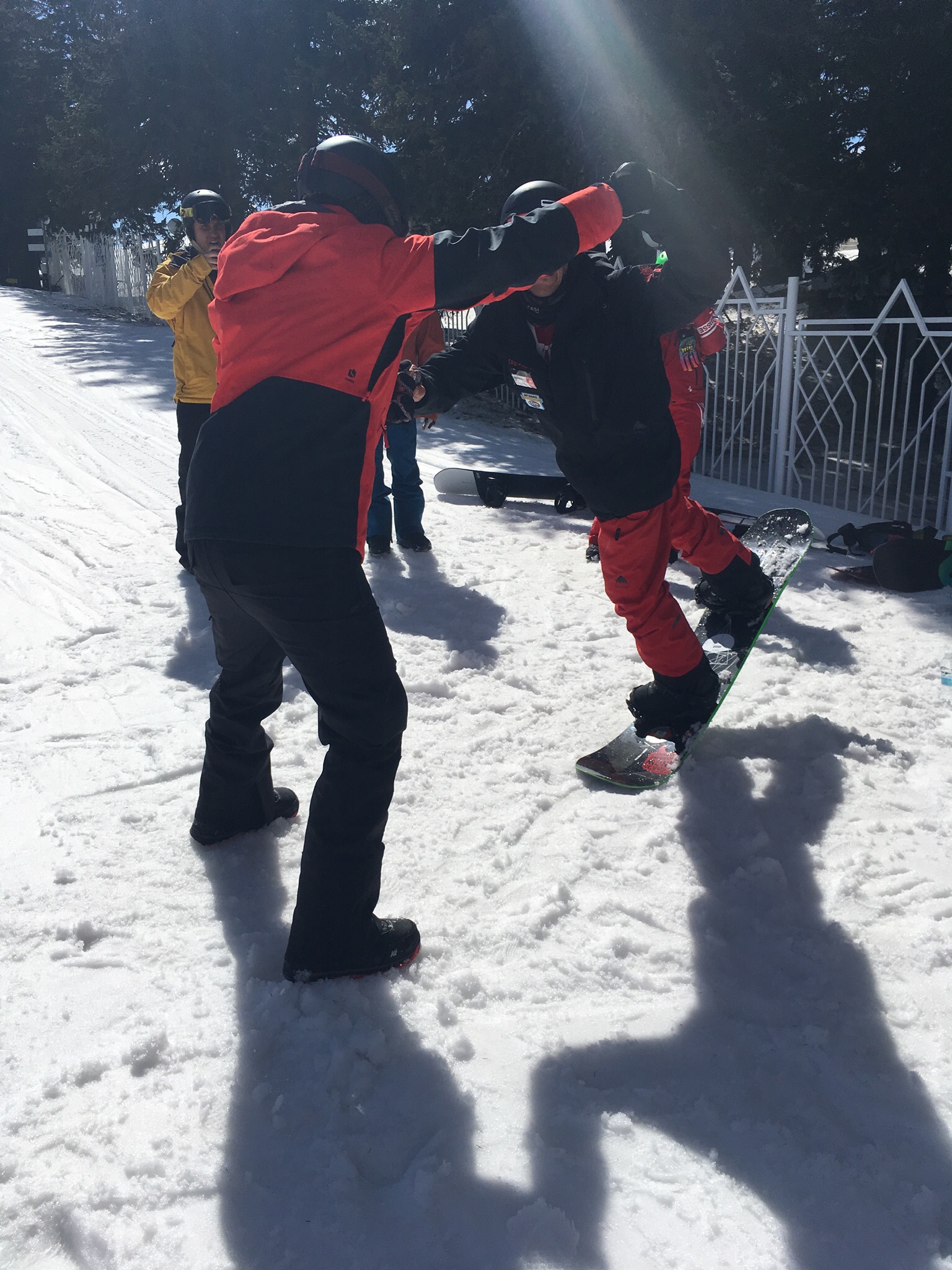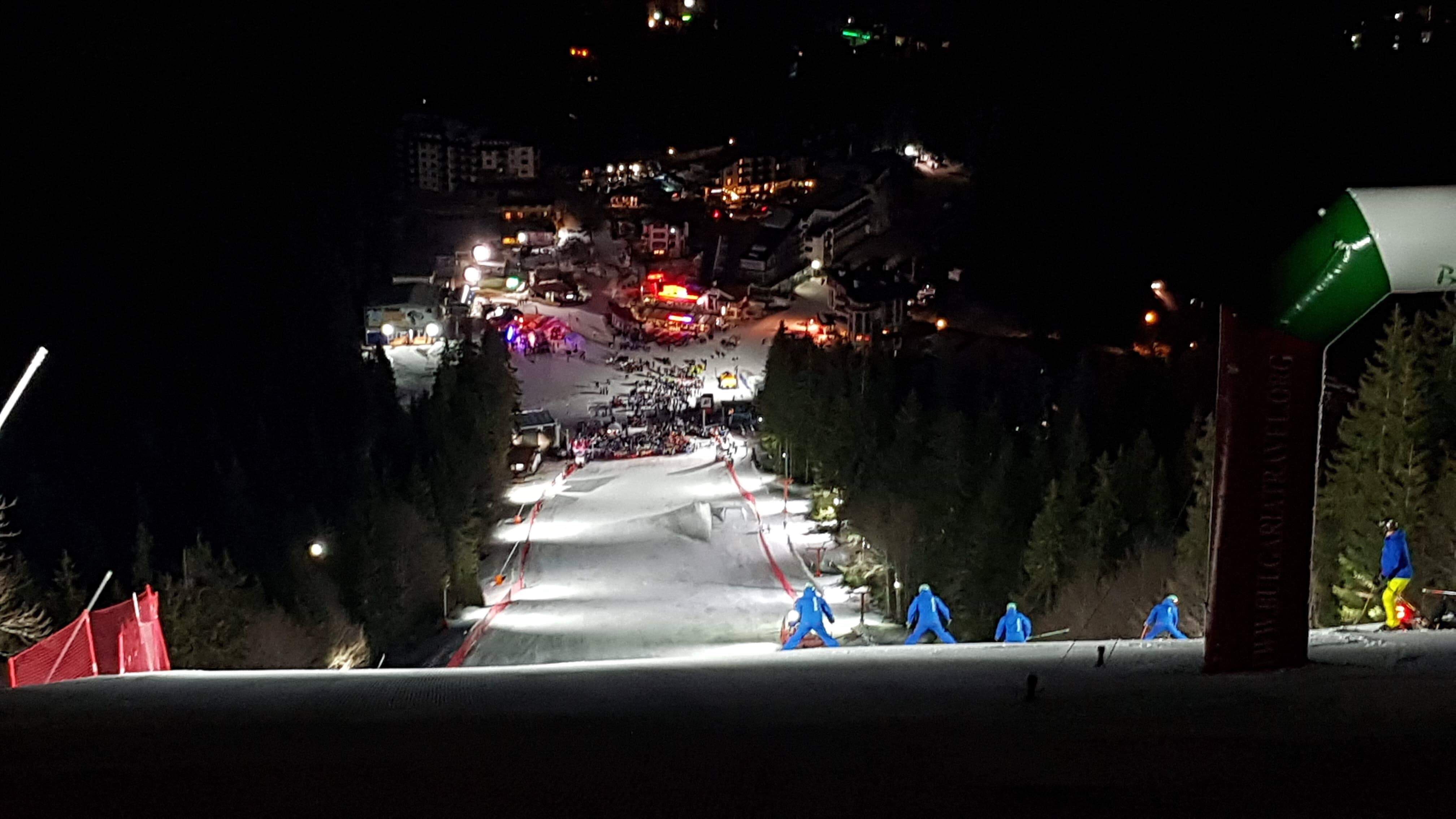Hi there! Luc, Adam, and myself attended Australian presentation led by Kylie and Adam ( probably the youngest demo team member of whole snowboard crew here)
Even though I work with many Australian certified instructors in my home resort (Whistler Blackcomb) I personally am not really familiar with APSI system. So I was very curious to learn about it.
To start with, Adam came down the pitch with long radius turn demo highlighting APSI technique. Kylie who was with the group at the bottom, explained about his body position and edge application to the group. (Establish visual image) I found it this was a pretty good way to present. Especially someone like me who is a visual learner.
Messages here were :
1- Centre of Mass is close to the snowboard.
2-Stable and quiet upper body, all the actions happen with lower body.
Then we tried the edge engagement at the initiation of the run in APSI way as a static exercise. For toeside, move COM slightly inside to stack the body over the edge (inclination), then use a lot of knee flexion to increase edge angle (angulation). For heelside, again minimum inclination, but creating edge grip by flexing hips joints to start with ( more vertical flexion at hip joints). Key point here is that I felt that APSI uses less inclination than CASI.
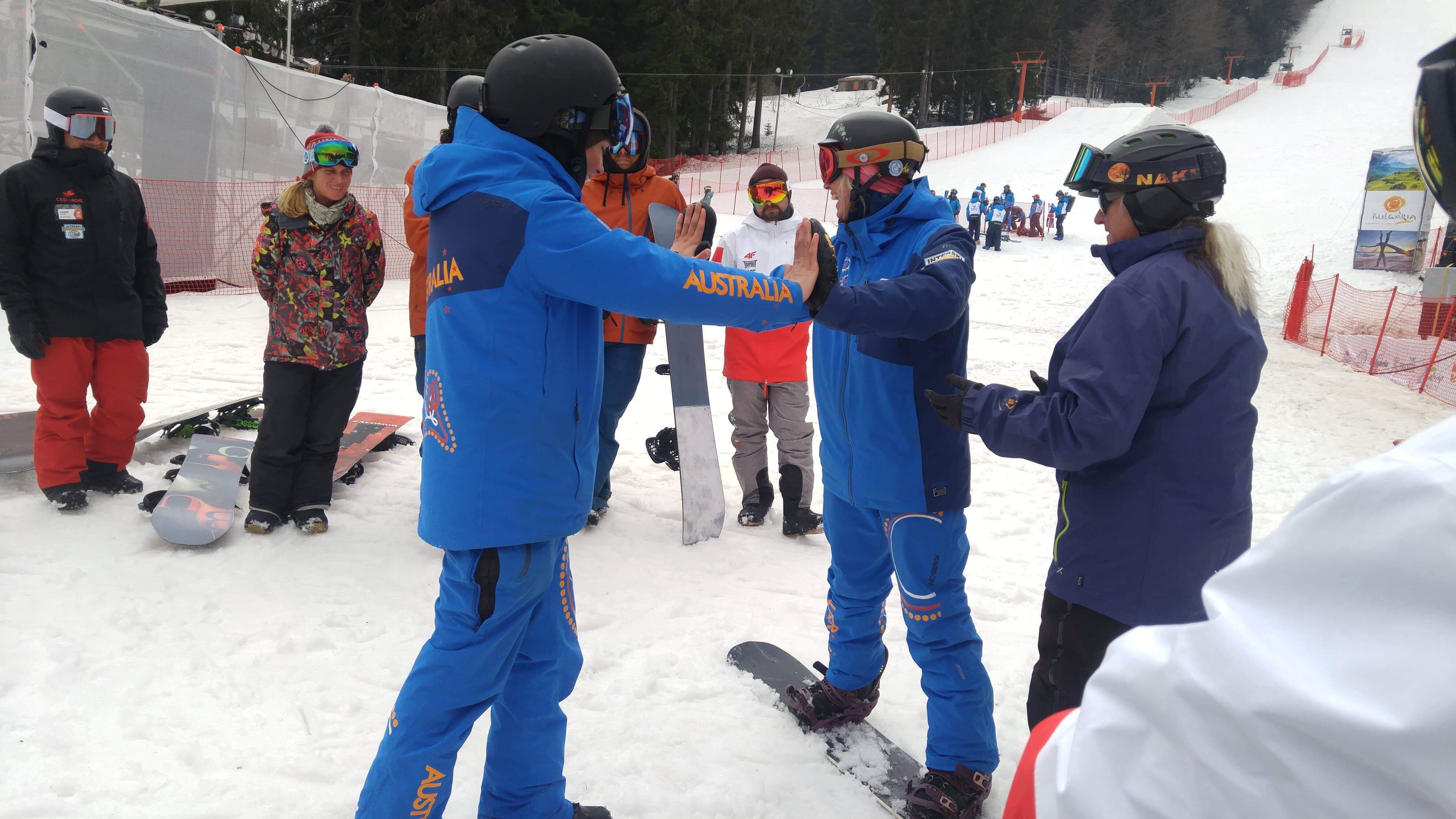
Then we tried a few carved uphill turns to feel this movement while moving. Here they emphasized that how they achieve the edge angle : highest edge angle = lowest body position. (This level of edge skill is required for level 1 certification) Again this body position being COM close to the board and quiet upper body is important in order to cope with Australian variable snow conditions especially when it is icy, for them it is not a smart thing to move upper body too far inside and COM away from the board.. that is what they said.
Move on to the one of the exam task of level 2 : Long Turn. Level 1 edge skill was how to feel the grip. Here for level 2 is focus on edge application especially at transition. (They told us to be patient at the top of the turn not rushing to apply edge too soon and not too aggressive) So at the transition phase, run the board fairly flat for the top part of the turn, then increase edge angle and load the board towards the bottom of the turn.
For level 3 level long turns. We experimented three different body parts to have more tension to ride : upper body, core, legs. And we compared which one would be more beneficial to achieve performance for ourselves. Again they explained little bit of the sequence of the movement regarding edge application movement. Release ankle and incline first at the start of the turn them flex at the completion phase of the turn. Still mentioning quiet and passive action at the top of the turn and all the actions happen towards the bottom of the turn. Those actions are, more edge, more pressure application and aggressive vertical flexion. I personally felt by doing that so much pressure built up towards the bottom of the turn and with the slush snow we were riding, It was slowing me down during that phase…
Level 4 they introduced separation of upper and lower body. Definitely more extreme level compared to CASI way of interpretation of upper-lower body separation. For APSI separation is introduced by keeping hips parallel to the snowboard while separating upper and lower body at the waist, upper body turns more towards the direction of travel (more anticipated position) According to APSI, by doing this position, it creates the strong core tension and also this position allows the rider to create dynamic angulation with shoulders, which stabilizes the body position with levelled shoulders to the pitch and perform level 4 standard long turns.
Here, even for level 4 standard, APSI still mentioned that the top of the turn has minimum actions regarding edge angle and pressure, instead, just creating platform that body can stand on, all the actions happen past the fall line.
I understand that every country has different way to interpret when it comes to riding techniques, quite often it is determined by the terrain and snow conditions.
What I learned today from APSI presentation was an interesting interpretation of edge and pressure application based on variable snow condition that Australian mountain has. However I found it was quite different from what we promote in CASI especially when we try to achieve higher level of performance. We CASI definitely use more inclination at the transition, start applying edge grip as well as pressure before the fall line to achieve more dynamic performance.
Thank you for reading this long blog!
Yuki
